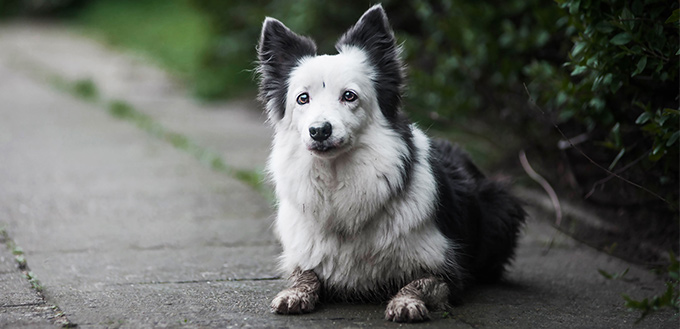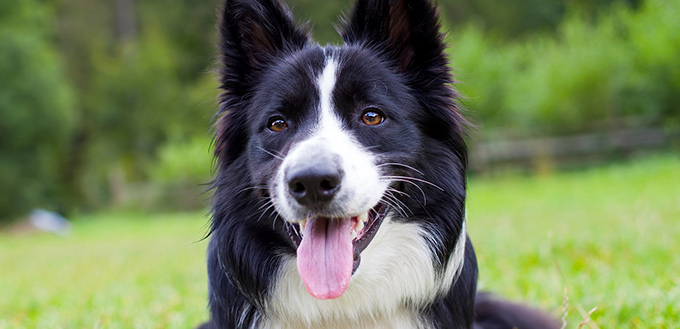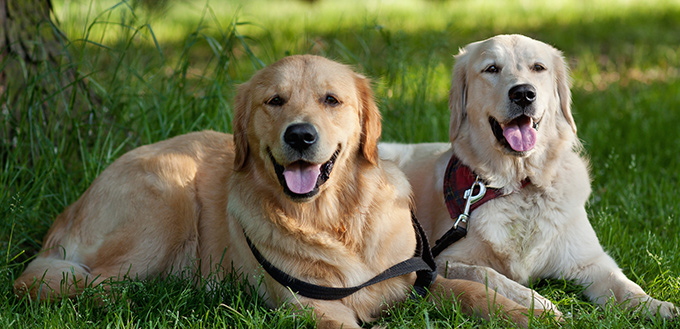With your kids now past their teenage years, you are probably feeling relieved that you won’t have to deal with adolescent issues anymore. But wait- you have a puppy, right? Surprisingly, adolescent dogs go through similar physical and behavioral challenges like human adolescents. They want to do their “thing,” break the rules and yes, they get acne.
Even though it is unpleasant, it goes away quickly when cared for properly. However, dog pimples can get painful and simple acne could lead to severe infection if you do not give it the right amount of attention.

What Causes Dog Acne?
Dog develop pimples for almost similar reasons as humans do. It can result from hormones, stress and genetic predispositions. Breeds with wrinkly skin like bulldogs are susceptible to acne because bacteria tend to stay within the skin folds.
- Age
Dogs are most vulnerable to acne during their puberty. However, it could occur at any point in their lifetime. Usually, puppies that suffer acne experience recurrences later in their lives.
- Hormonal changes
Just like in the case of humans, acne can get worse due to hormonal changes like heat cycles. Spayed females rarely experience similar hormonal changes that unaltered females do. Therefore, you should consider getting your pooch fixed.
- Individual susceptibility
Just like some people are more prone to acne than others, it’s the same case for dogs. In such situations, one has to reduce other acne risk factors as much as possible. You should also treat acne the moment it surfaces on your furry friend’s face.
- Poor hygiene
Debris and dirt that clogs on a dog’s follicles can lead to acne development. That is why pet owners should clean their pets regularly. Surprisingly, poor doggie dental hygiene might also contribute to acne. Make sure that you brush your pup’s teeth often and give them tooth-cleaning chew treat.
Related Post: Best Dental Chews for Dogs
- Friction
Friction and poor hygiene practices might increase the possibility of follicular irritation, which results in pimple formation. Such friction may come from things like a poorly sized harness and collar. Therefore, always get the right size for your canine buddy and check the area that touches the dog collar frequently.
Breed Susceptibility – Do Some Breeds Break Out More?
Yes, some dog breeds are more vulnerable to pimples than others. You should consider preparing yourself for this possibility from the onset so that you are not surprised by the appearance of a few blackheads. You will notice that most of the breeds that are vulnerable to pimples have short hairs. So this could be a factor that leads to their susceptibility. Some of the breeds prone to pimples include:
- Boxers
- Rottweiler
- Great Danes
- Mastiffs
- Pit bulls
- English bulldogs
- Weimaraners
- American Staffordshire terriers
Symptoms Of Dog Acne
- Red Bumps
- Pain/irritation
- Pus-filled pimples
- Blackheads
- Redness
- Inflammation

Superficial Acne vs. Deep Acne: What’s the Difference?
Just as the name suggests, superficial acne affects only the surface of the skin. Dog acne is a mild disorder that lasts for an incredibly short time in most cases. It appears when the hair follicles are irritated and is common in breeds that have short furs. When the hair follicles are irritated, dogs feel a sensational discomfort and feel like scratching the affected parts. Most dogs have acne during the puberty phase; usually between five and eight months. A pup with superficial acne will want to keep scratching.
Rarely does acne lasts beyond a dog’s first birthday. If it does, you might be dealing with the deep type of acne. Usually, superficial acne turns to deep acne due to a staphylococcus infection that cannot be contained any longer. Scratching the itch from the surface layer will irritate the skin and make it susceptible to bacterial infection.
Types Of Deep Acne In Dogs
Nasal acne
You know your dogs have nasal acne if they keep rubbing their noses on different objects or digging into the ground using the trunk. The lesions that form on a pup’s nose could become fistulas due to the destruction of hair follicles. You should observe the dog to prevent it from hurting its nose. S
Juvenile acne
In case you notice lesions on your puppy, it could be a sign of juvenile acne. The pimples appear around the eyes, lips, and ears. The affected part of the skin becomes painful, inflamed and is filled with pus. The formation of the scars and crusts is most visible.
Interdigital acne
The lesions are located at the interdigital part of short-haired dog breeds. The signs include fistulas, loss of hair and reddened skin. However, this is not a common acne type.
Hyperkeratosis acne
Hyperkeratosis is used to mean thickened skin. This kind of acne is visible on the hocks and elbows of large dogs. Its signs include the formation of fistulas. When combined with fluid retention due to mechanical injury or staphylococci, it could also manifest as ulcers.
How Can You Treat Dog Acne?
Dealing with acne the moment you notice the first lesion will prevent it from advancing to deep acne.
- Better hygiene
Unless a dog is still in adolescence, most pimple troubles arise due to bacteria and poor sanitation. Washing your dog regularly; at least once a week or a few times in a month is enough to keep your canine friend clean. Some of the acne around the mouth such as nasal acne is due to poor dental hygiene. That is why you should brush your dog’s teeth a few times and give them dental treats. If you had recently introduced a new type of food, it could be an issue, so consider excluding it.
You May Also Like: Dog Toothpaste
- Allow nature to take its course
Although you might be tempted to pick with the acne, it’s always advisable to let the acne heal on its own. Picking on the pimples might make the problem worse. It could make the acne to spread around the area and lead to a severe infection. The most that one can do is to press a warm cloth around the affected part to reduce swelling. The rest of the treatment techniques ought to be done by a licensed veterinarian. At times the acne may clear without the owner having to do anything.
- Medicated shampoos
Visit a pet store to find out about the medicated dog shampoo they have. Dog shampoos that contain Echinacea or aloe vera are helpful in managing dog skin problems. You can bathe your canine better half with products that are tailored specifically to dogs. If you use human shampoos, ointments, and cream, they might be too harsh on them. Observe the progress keenly to ensure that the product is not making the problem worse than it was because some products can cause an allergic reaction or irritate the skin in some dogs.
You May Also Like: Medicated Pet Grooming Product
- Visit a vet
If the area seems to be infected or the acne gets worse over time, you should consult a vet immediately. Severe cases of acne can be treated easily by prescription medicated soaps, oral medication, and ointments. Talk to your vet for medical advice and appropriate treatment options. Depending on the evaluation, the veterinary might choose to give your dog antibiotics and antifungal meds to treat bacterial and fungal infections.
With the help of a veterinary, you are assured of consistency in treatment and management of the underlying conditions. When you seek medical expertise, the acne may clear up within a month or less. If you manage to keep the area clean and away from an environment that could worsen the situation, the acne might disappear forever.

Human Acne Vs. Dog Acne
At this point, you might be curious to know how dog acne compares to human acne. Here’s how:
Acne similarities between humans and dogs
The main similarity between acne in humans and dogs is that it is a big bummer. Besides that, there are other significant similarities between the two experiences include:
- Dogs get whiteheads and blackheads just like humans
- Whether it’s a dog or a person, a pimple is the same – a congested pore
- Just like in the case of human acne, the face is the most vulnerable to forming pimples
- Dogs are like people; dogs cannot leave a blackhead alone once they have one
Acne differences between humans and dogs
Although pimples are not fun for either you or your dog, there are some differences between human and canine acne
- Unlike human pimples, canine acne does not last for several years; it only sticks around for a few months. At times it is merely a reaction to the environment.
- While in the case of acne for people going through puberty, vets do not believe that hormonal levels play a considerable role in dog acne.
Acne is a regular part of a dog’s life mainly when they are growing up. Mild acne cases are common in adolescent dogs. However, if the outbreak starts bleeding or seems infected, it could be a cause for concern. The most you can do at home is to keep your pet clean and bathe them regularly. Remember that good dental hygiene and the use of medicated shampoo is also essential. Any other questions and concerns should be directed to your vet.
Sources:
- Catherine Barnette, DVM, Acne in Dogs, VCA Hospitals
- Dr. Jason Pieper, Can Dogs and Cats Get Acne?, University of Illinois College of Veterinary Medicine






